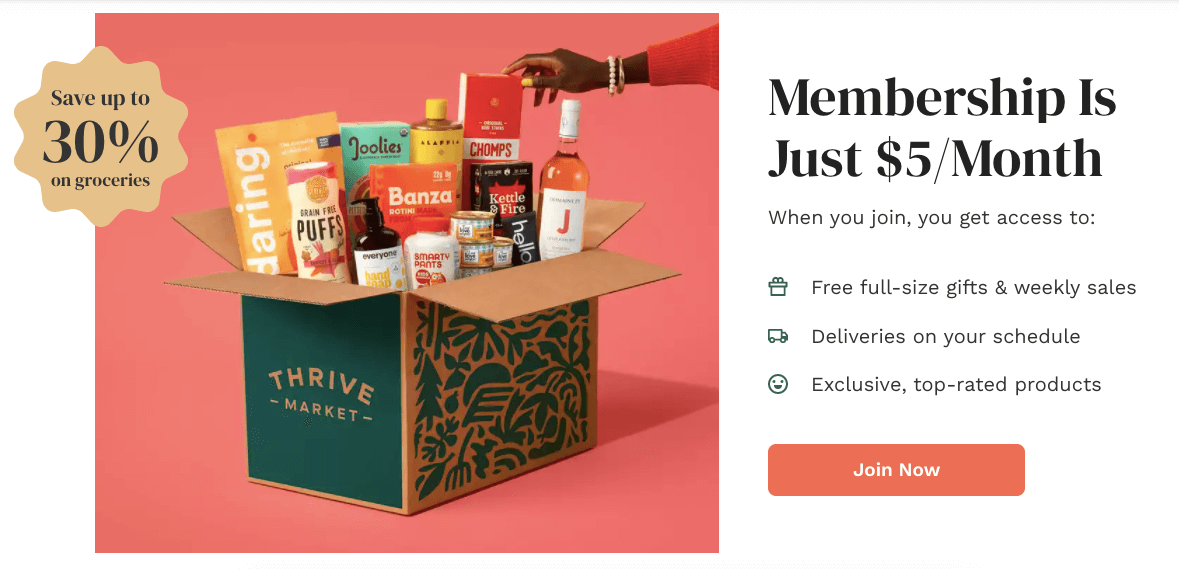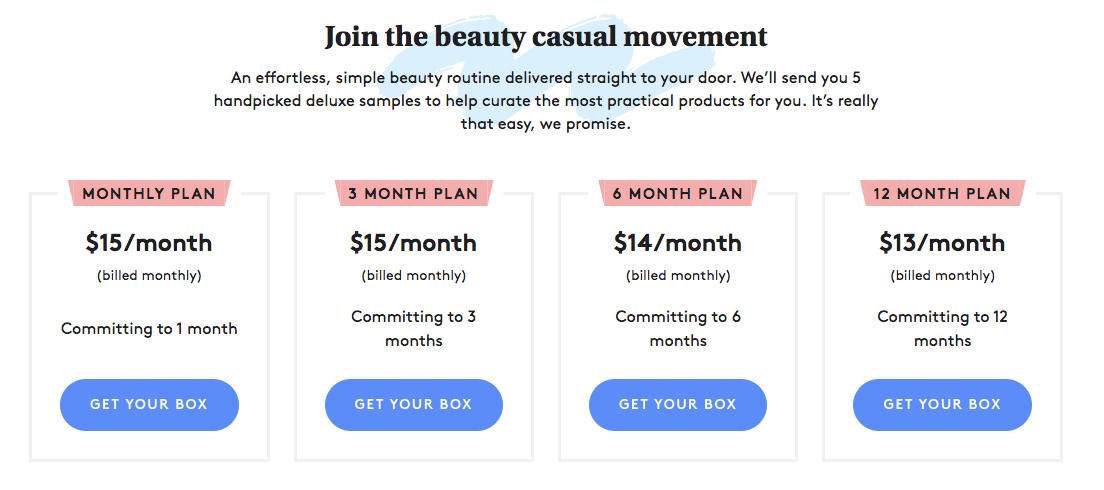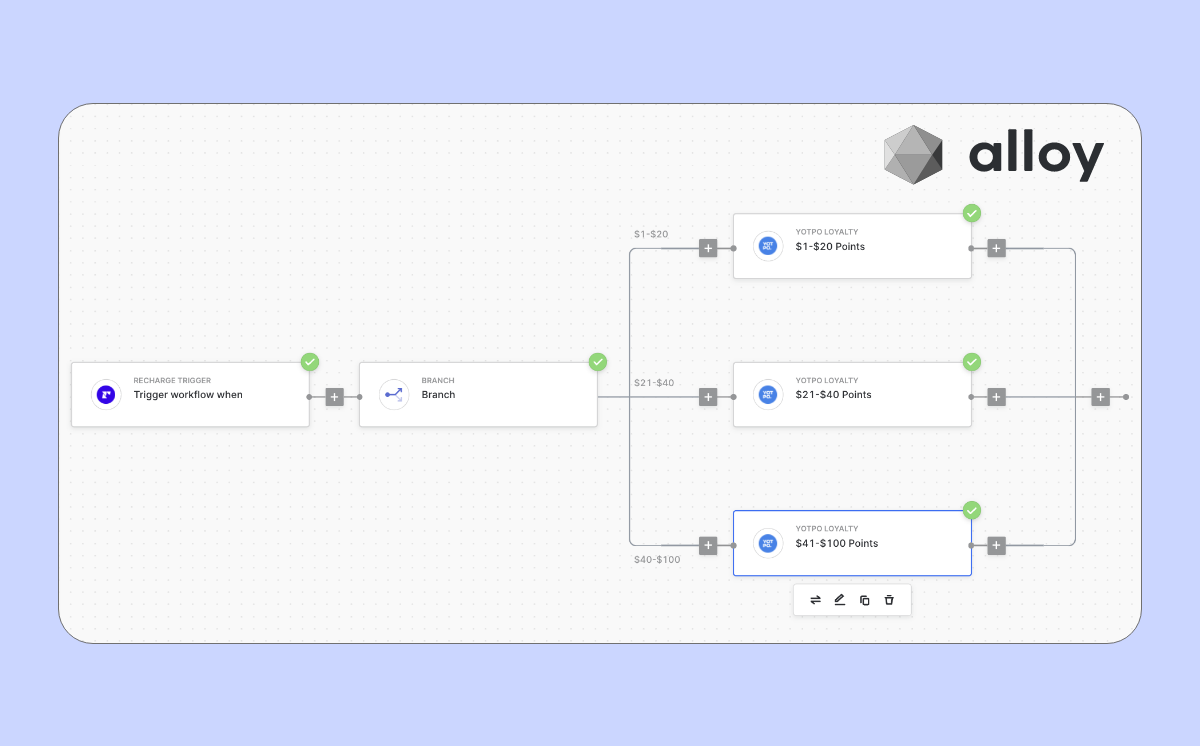Subscription eCommerce—selling products on a recurring basis—has been around for years.
It wasn’t until the pandemic when this purchase model exploded.
At-home restrictions pushed our buyers to order anything from groceries to nail polish online. And who’s complaining? You never have to leave your house to restock certain items again!
As stay-at-home policies have decreased, the demand for subscription–based businesses has only increased. eCommerce subscription is projected to make over 38 billion dollars in 2023—more than double made in 2019.
The real question isn’t if eCommerce subscription is popular (it is), but if this new fad is right for your brand.
We’ll help you find out by showing you:
- Why subscription eCommerce is trending
- Three subscription eCommerce models
- Seven steal-worthy examples of subscription-based brands
You’ll leave this article with an understanding of eCommerce subscriptions and if your business is ready to take the leap!
Is subscription eCommerce the future?
Subscription eCommerce is influencing the online front for both you and the buyer.
Check out the chart below.

Everyone from Gen Z to the baby boomer generation has increased their interest in subscriptions.
These findings are no surprise. Subscriptions automate the tedious task of repurchasing items. Another plush is the money you save by subscribing.
More time on your hands for less money? Yes, please!
eCommerce subscription isn’t only beneficial for shoppers, but it can also be powerful for your margins. Some perks of a subscription model for your business include:
Customer retention: Did you know that up to 42% of subscribers may stay with a certain brand after 12 months?
No more worrying about buyers leaving you for a competitor—subscriptions lock in customers for the long haul.
Brand loyalty: A subscription-based community means more opportunities to engage with customers via email, social media, and community events.
Consistent revenue: Wouldn’t it be nice if you could predict your monthly revenue for the next quarter, or even a year? It’s possible with a subscription model.
In fact, subscriptions might blow your MRR out of the water. Subscription-based businesses saw growth in MRR from 2020 to 2021 across all industries.

If you’re in the food and beverage or health and wellness industry—well, you’re in for a special treat. Look at that growth!
It’s settled. eCommerce subscriptions are an opportunity for both you and your audience to thrive. But what does this business model look like, IRL?
Let’s explore three popular eCommerce subscription models.
What are the most common eCommerce subscription models?
1. Replenishment subscription model
Also known as the “subscribe and save” model, this service restocks customers’ items on a cadence unique to the product(s).
This subscription model is perfect for selling items that need restocking—cleaning supplies, pet food, hair care—all that good stuff.
Most replenishment subscriptions use a model similar to Grove Collaborative.

It’s simple. Buyers browse your store, choose their products, and sign up for a subscription. If you’re selling an indispensable product, buyers will most likely stick with your “set it and forget it” subscription.
Most eCommerce stores sell essential items with the replenishment model. But some opt for the access subscription model.
2. Access subscription / membership model
An access subscription model is like a replenishment subscription. But access subscriptions require a membership. Think Costco, but only online!
This model works great as long as buyers are saving money with your membership.
Organic groceries, for example, can burn a hole in your wallet. But membership-based companies like Thrive Market sell organic products at a wholesale price.

For just $5 a month, customers can go organic for less than the market price AND they ship to your door.
Overall, access memberships work best if you’re helping shoppers save money overtime.
Both replenishment and access subscriptions target necessary products. But what if you sell novelty items, like homemade bracelets or classic novels?
If that’s you, you’ll love the curated subscription model.
3. Curated subscription model
Curated subscriptions send items based on someone’s likes and desires. Think of this model as receiving a gift from your best friend!
Here’s how curated subscriptions work.

First, brands get to know customers using an interactive questionnaire. Then, the brand uses the data to personalize a box of goodies.
Psst… this step is where marketing automation software, like Sendlane, comes into play!
So who benefits from a curated subscription model?
Niche-eCommerce stores and DTC brands are major contenders. This is your chance to show off your original products—whether that’s specialty coffee, premium wine, or vegan-based makeup.
As long as your audience enjoys trying something new every month, you’re good to go!
But maybe you’re still curious about whether an eCommerce subscription is right for you. Let’s explore seven real-life examples of subscription eCommerce and why they work.
//[inject:ad-multi-store]
7 subscription eCommerce examples to inspire you
1. Who Gives A Crap’s sustainable toilet paper
We’ve all experienced the scenario where you go to the bathroom and realize that *gasp* there’s no toilet paper.
Sucks, right?
Who Gives a Crap solves this issue with a replenishment subscription. Subscribe to this eCommerce brand, and you never have to worry about toilet paper again.

Who Gives a Crap hits the jackpot by selling an item everyone buys. Its straightforward subscription model makes it easy to opt in.

Second, this toilet paper brand donates a whopping 50 percent of proceeds to building toilets around the world!
As mentioned in our eCommerce trends roundup, sustainability influences visitors to buy. People want to feel good about the products they buy.
Here’s one thing to keep in mind about sustainable brands. They have to spread their mission like wildfire. If not, people won’t know its impact.
A dynamic marketing strategy—email marketing, social media, and an SMS campaign should drive your mission home.
Overall, we love how Who Gives a Crap:
- Targeted a product everyone buys regularly
- Spreads its mission with a solid content strategy
Let’s move on to another sustainable brand, shall we?
2. Smartypits’ natural deodorant
Smartypits solves the struggle of finding clean deodorant with a line of aluminum-free deodorant.

This brand’s replenishment model is simple. Subscribe to their monthly box and unlock paid shipping!
They also converted more website traffic by implementing a product recommendation quiz. Answer a few questions, and boom! You’ve got yourself the perfect deodorant.

Product recommendations are an effective way to convert traffic into sales by leveraging personalization. Use this tool to engage and funnel users into your eCommerce subscription.
As we mentioned earlier, replenishment subscription models work best with essential products.
Deodorant is necessary. But it’s unlikely that you’ll need to restock every month. Offer a quarterly or six-month shipment rate to avoid subscription overload!
Some tips to take from SmartyPits’ eCommerce subscription:
- Shorten your sales funnel: Product recommendation quizzes customize the customer journey without you being there!
- Separate yourself from competition: SmartyPits emphasizes being aluminum-free and stands out from other natural deodorant brands.
Let’s take a break from the replenishment subscription model and move on to the fun stuff—curated subscription boxes!
3. Birchbox’s beauty movement
Birchbox takes the guesswork out of finding the best beauty products with a customized beauty box.

While customers don’t technically “need” the latest beauty products, Birchbox uses live videos to educate users about why they’re worth checking out.

This brand frequently posts live videos about their latest products and how to use them. Interactive content gives that “community feel” users now search for in fashion brands.
A few things to learn from Birchbox’s curated subscription:
- Hype up your hand-picked boxes with educational content—blog posts, newsletters, or social media posts
- Grow your online community with live Instagram videos. Sendlane can promote videos with time-sensitive emails and SMS messages.
4. The Sill’s house plant collection
Another vital piece to curated subscription businesses is targeting an audience, like plant-loving city dwellers.

The Sill helps city residents fill their apartments with beautiful house plants every month. And just like Birchbox, The Sill provides education with a plant library.

Now subscribers are prepared to take care of their house plants. No stress is necessary!
The verdict? Target the right audience and nurture them with additional content. Some ideas we have for The Sill include:
- Posting brief clips on how to take care of each plant
- Encouraging subscribers to share photos of their plants on social media
- Interviewing plant experts
Don’t forget to measure your results with handy metrics, like views, click-through rates, and open-rates. Sendlane can help with that (wink-wink).
5. Crossrope’s active community
Along with Crossrope’s weighted jump ropes, this brand offers a premium access membership. Users get unlimited jump rope workouts, activity tracking, and tutorials.

So what’s so great about this app?
For starters, it provides valuable content 24/7—a necessity with access subscription plans. The app encourages buyers to use their jump rope and have fun along the way!
Plus, workouts can upsell users to more workout items down the line.
One thing we’d add to Crossrope’s app is a community feature.
Take Peloton, a popular at-home fitness technology brand.

Peloton hosts virtual workouts with paid subscribers. Community-based activities keep members accountable and connected with your workout experts and fellow members.
Overall, access eCommerce subscriptions must over-deliver on value.
And you don’t always need an app. The following elements should keep users engaged:
- Community activities: Live videos and online workshops
- Curated content: Workouts, recipes, tutorials, etc.
- Expertise: Interviews, Q&As, or an exclusive podcast
6. Smart art’s creative collective
You already know that COVID-19 boosted subscription eCommerce like crazy. But something else the pandemic brought to attention was at-home hobbies.
Smart Art “empowers creativity” with a monthly box of art supplies. The tutorials encourage buyers to make beautiful art in the comfort of their home.

Smart Art isn’t just selling items, but an experience—something we all crave even after the pandemic.
What’s even better is the return policy. When you’re done with a box, send the used supplies back and avoid a cluttered home!
Of course, the inspiration to create art comes and goes. Smart Art keeps users interested in their monthly box with sneak peek videos of what’s coming.

This brand also partners with YouTube creators so users get inspired with what’s possible.
If we worked with Smart Art, we’d ramp up social media with live tutorials of each art box. This way, users can create their masterpiece with an online community.
7. Italic’s retail subscription
Here’s another access subscription model to follow. Italic sells independent clothing, beauty, and home brands at a cheaper price.

Italic does great at creating a worthwhile subscription. Joining Italic’s eCommerce subscription gets you more than the standard free shipping.
Members also get:
- $120 in credit to spend every year
- Cash credit after leaving reviews
- Referral bonuses
- Saving guaranteed, or else Italic will credit the difference
Talk about value! Italic is doing all things right with an access membership model.
Jeremy Cai, the founder and CEO of Italic, shared some thoughts on the DTC Pod about how they’ve succeeded in this competitive space.
“It depends on your brand and what you stand for, and what your customers get out of you. Finding that and speaking to that is really important.”
He continues, “But it’s also not something that happens overnight or happens in a boardroom. You have to go out and talk to your customers.”
That last sentence is gold. Chatting with your audience is key to understanding what they want in your membership.
Get quality feedback from interviews, surveys and interactive quizzes. Sendlane can blast these assessments with personalized email, SMS, and website pop-up notifications!
Overall, these seven eCommerce subscription examples all have three things in common:
1. It’s easy to subscribe - Evenly distribute CTAs throughout your site and marketing campaigns, and offer multiple billing cycles (weekly, biweekly, monthly, etc.)
2. They target an industry - Serving a niche audience allows you to sell products they adore.
Popular demographics to target include:
- Income
- Gender
- Emotions, values, and desires
3. They make life easier - Your audience should feel stress free and excited to get your box! Pump your audience up with dynamic marketing, customer support, and a streamlined inventory.
Getting started with subscription eCommerce
You’ve explored the basics of eCommerce subscription and seven inspiring examples.
So, what have you decided? Is your eCommerce brand suited for a subscription model?
Maybe you’re interested, but don’t know where to start.
Look no further than our Sendlane and Recharge duo! Recharge will set up your subscription-based business. And we’ll take care of all your marketing needs—personalized email messaging and automating all of your recharge data!
Ready to take this integration for a spin? See how we can up level your subscription business with a free demo!

%20(1).png)
%20(1).png)




%20(1).png)
.jpg)


.jpg)
.jpg)


.jpg)





.png)



.png)





.png)


.png)

.png)
.png)

.png)
.png)

.png)

.png)


.png)
.png)
%20(1).png)
.png)









.png)











.png)
.png)

%20(1).png)

%20(1).png)



.png)


























.png)











































.jpeg)



.png)




























.png)



.png)

.png)

.png)
.jpeg)


.png)













.png)

.png)










.png)












.png)






































.png)



.png)

.png)

.png)
.png)

.png)
.png)

.png)

.png)

.png)






















